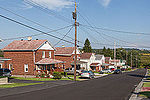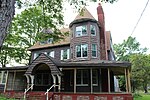Beula, Pennsylvania

Beula, or Beulah, Pennsylvania was a town that existed between 1796 and 1804 in Cambria County, Pennsylvania, founded by Welsh Minister Morgan John Rhys. The original settlers under the guidance of Rhys had bought the land from Dr. Benjamin Rush, in search of a home in the countryside. They originally planned on settling in western Ohio, but it took too long to secure land in that region, so the Pennsylvania tract was settled upon. Two members of Rhys's party would go on to found Paddy's Run, Ohio. Rhys intended for Beula to be a cattle range. The Welsh were inspired to settle down in America by their religion -being Welsh Dissenters-, the politics of the era, and as well as the Prince Madoc myth, that a Welsh Prince had discovered America in the 1100s. It is one of the few ghost towns mentioned as a part of Pennsylvania's Ghost Town Trail.
Excerpt from the Wikipedia article Beula, Pennsylvania (License: CC BY-SA 3.0, Authors, Images).Beula, Pennsylvania
Ghost Town Trail, Cambria Township
Geographical coordinates (GPS) Address Nearby Places Show on map
Geographical coordinates (GPS)
| Latitude | Longitude |
|---|---|
| N 40.4767 ° | E -78.772 ° |
Address
Ghost Town Trail
Ghost Town Trail
15948 Cambria Township
Pennsylvania, United States
Open on Google Maps






